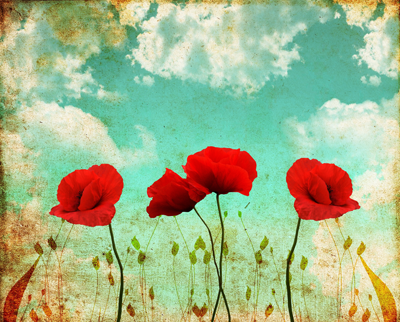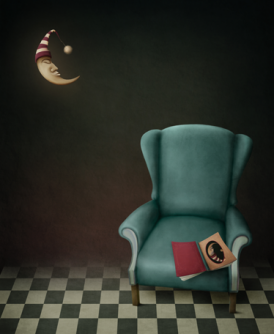Cultivating Your Writing Seeds
What are the right circumstances for germinating seeds, for giving birth to art? How can we create an environment—within and without—to support and grow our writing lives?
As I consider these questions, I think of my friend Audrey, who was wise and productive in the ways of art and seeds. Audrey made deep mixing bowls of swirling colored clays, rounded umber pots fired and cooled in oceanside sand pits, and big-handled mugs in pleasing shapes and dappled glazes. As I write, I like to sip tea from one of Audrey’s cups. It’s a ritual for me. I learned a lot from her about creativity, by witnessing her devotion to her art and by watching her work in her garden.
Taking Creative Risks, Attracting Creative Energy
Audrey had a wild, old-fashioned garden, the kind of garden that passersby would talk about in the moonlight, lingering to appreciate the variety and vigor of her plants. She grew mallow and nicotiana, penstemon and butterfly bush, California poppy and even opium poppy, which is illegal, but Audrey didn’t mind taking risks in her garden if it meant she could enjoy another beautiful flower. She liked to plant flowers and herbs that attract other living creatures. Her garden twittered and fluttered and buzzed with birds and butterflies and bees. It was an enchanting place, and her way of working in it reveals abiding truths about the creative process.
Collecting Seeds
When I first met Audrey she was sitting on a bench in her garden, bent over a small box on her lap, working her hands rhythmically.
“What are you doing?” I asked.
“Collecting seeds,” she answered.
I took a step closer to see. There in the box lay seeds so tiny they looked like dust. I gasped. I was not then a gardener and had no idea that one could collect seeds from spent blooms, or that one would bother trying when seeds could, after all, be bought at a store. Audrey didn’t like to buy seeds. She didn’t have to. She knew the kinds of flowers she liked, and she could reseed her garden every year from her own mature plants. Sometimes, driving in the country, she’d stop by the side of the road to collect seeds from a wild variety to plant later on at home.
After she gathered her seeds, Audrey would let them dry, put them in envelopes, label them, seal them in glass jars, and incubate them in the refrigerator until planting time came again. Then she would start them in little seed pots. Some of them took off and some of them didn’t. She transplanted the ones that germinated in pots into her garden, where everyone could enjoy their beauty.
Being Present
In the meantime, she had been preparing the soil, clearing away debris, mixing manure into the ground, turning it over and giving it time to compost before planting again. Even during the fallow time of year, when nothing much was growing, Audrey spent time in her garden doing whatever work needed to be done. Sometimes this was a matter of simply sitting there, looking things over, being present; this was one of her favorite things to do. To people who don’t garden, it might seem inconceivable that her winter work could produce spring blooms, but it did, year after year.
And so it is with writing.
Like Audrey’s garden, writing is an organic process. It involves collecting seeds of ideas, incubating them for a time in the cool darkness of the unconscious mind, planting them in little containers of word snippets that may or may not grow into form, and transplanting the hardiest ones into the full garden of the imagination, where they can bloom into stories and poems and every other variety, not only for the writer but for all who happen by.
Exercises
Start an Idea Notebook
You can find and collect writing seeds wherever you go:
- on the bus commuting to and from work;
- in the doctor’s office while waiting to be called for an appointment—or between patients, like the poet (and M.D.) William Carlos Williams, who wrote poems on prescription slips;
- while out for a walk, with notebook in hand;
- even while swimming, by letting your rational mind rest while your imagination dives freely.
For three weeks, practice paying attention to the images and strings of sentences that come into your mind, phrases you hear or read that surprise you, images you find compelling, and anything else that moves you. This practice can help you become aware of when you’re writing in your head. As you notice your words and ideas, jot them down but don’t explore them fully. Keep your notebook with you—get one that fits in your pocket or purse—and when something strikes you take a minute to note what you’ve seen or heard, thought or felt.
Keep a Seeds Journal
Here’s a simple way to expand your ideas, one at a time, from my friend Tania Pryputniewicz, who gave me this exercise. After you’ve spent a few days collecting ideas, choose one word, phrase, or topic from your idea notebook—Tania calls the single topic a “seed.” Write your seed at the top of a blank piece of paper in your journal. Viola: It has now become a “seeds journal.”“As you move through the week,” Tania says, “keep that seed in mind and see what crosses your path that belongs in the garden with that seed. You are free to either make notes as you go through the week or let your seed germinate in your mind. At the end of the week, open to that seed page and give yourself ten to fifteen minutes to write about your week and what life brought you in relation to that topic.”
Inviting Your Ideas to Join You
Keeping an idea notebook will help you become more receptive to your interests and your narrative voice. Keeping a seeds journal will help you attract images and information connected to your topic as you develop it naturally. If you continue these practices, ideas will continue to come to you, themes will emerge, and you’ll develop a strong sense of the material that’s important to you.
When do your ideas come to you? How do you collect them? What kind of notebooks do you like to write in? How have the exercises in this post worked for you?




Hi, Barbara–Thanks for this splendid article! I am also a gardener. I am sometimes troubled by ideas that seem great. I begin to develop them, and then they “wither”. It occurs to me as I read your article that I have the same experience in my garden! It helped me to think that I don’t plant all of my seeds, and I certainly can’t grow all my ideas. I’m signing up for your weekly digest! thanks! Caroline
Thanks for your comment, Caroline. You’ve made a great observation about not planting all of your seeds. When I was a new gardener, I could not believe the directions on the arugula seed packet to thin out my seedlings, so I didn’t thin them out, and none of them grew. Then I began to apply what I call “the arugula principle” to my writing: choosing the best ideas, cultivating one or two at a time, not expecting all of them to develop fully.
Over the years I’ve had many ideas that I cultivated and later set aside. Sometimes i go back and work on older ideas; sometimes I let them go. I find it helpful to try ideas out, to experiment with them and see if they hold my interest. Some do; some don’t. When an idea comes up repeatedly, I know I’ve got to spend some time with it. I don’t throw old, undeveloped work away, because sometimes it inspires new ideas, and sometimes old paragraphs find a home in new work.
Thanks so much for signing up for my blog digest! Happy writing and gardening!